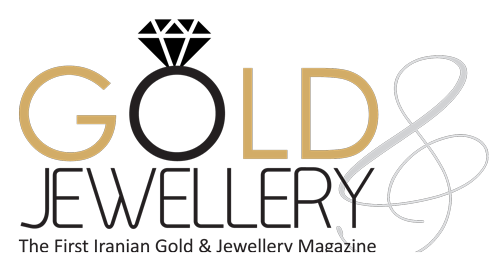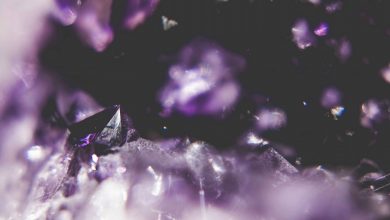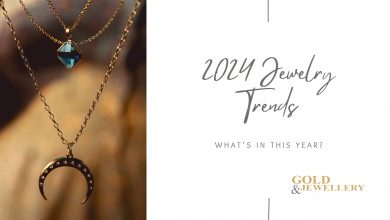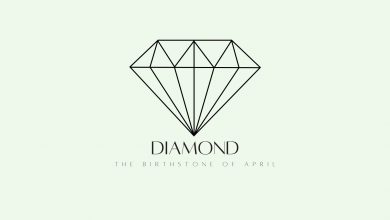March’s Two Contrasting Birthstones

If you were born in March, you’re in luck because you get to celebrate your birthday with not just one, but two birthstones!
The History of Aquamarine
Aquamarine is the gem of the sea, coming in a range of pale blue to light green varieties of beryl, some even as clear as water! The name is derived from “aqua,” meaning “water,” and “marina,” meaning “sea,” symbolizing “seawater.”
According to Greek tales, Poseidon created the stone from seawater, which led to the belief that the stone could protect fishermen and navies. Later on, the stone became associated with protection against poison, particularly among rulers.
Over the past two decades, Brazil has been the primary producer of aquamarine. Other major producers include Pakistan, Madagascar, Myanmar, Ukraine, Colorado, and California.
Properties
Aquamarine is a beryl mineral found in igneous and metamorphic rocks worldwide. It is emerald’s blue-green twin, and related to other beryl stones such as morganite (pink), heliodor (yellow/yellow-green), goshenite (colorless), and maxixe (deep blue).
Aquamarine gems are less fractured than emeralds, this makes finding larger and more perfect stones easier. Aquamarine is valued based on its color and clarity with lower-grade beryl used in beryllium metal refining. Most aquamarines are heat treated to remove yellow tones and enhance the blue hues. Aquamarine’s natural blue and green hues come from ferrous iron and metallic ions.
Healing
Aquamarine is thought to symbolize “purity of spirit and soul.” Ancient mariners believed the diamond could calm waves and keep sailors safe at sea. This gem was also believed to bring happiness in marriage. Beryl was said to protect the bearer against opponents in combat. It was also supposed to make the wearer unconquerable and charming, as well as to stimulate the mind.
Care
Aquamarine, has a hardness of 7.5-8 on the Mohs scale, making it a durable gem suitable for everyday wear. Taking care of this precious stone is relatively simple, given you are gentle enough. Use warm water, mild dish soap, and a soft toothbrush to remove any dirt behind the gem. Ultrasonic cleaners and steam cleaning are generally safe methods as long as there are no fractures or liquid inclusions in the gem.
Despite its hardness, aquamarine can still be susceptible to breakage if exposed to extreme temperature changes or sharp blows, especially if the gem contains natural inclusions. Avoid using heat to clean aquamarine, as it can have adverse effects. Moreover, prolonged exposure to sunlight may fade the vibrant color of the gem, so store aquamarine jewelry away from direct sunlight when not in use.
Alternative Birthstone: Bloodstone
March has a second birthstone that offers a striking contrast in color and character: the bloodstone.
The History of Bloodstone
Bloodstone was known as heliotrope which means “sun-turning” in Greek symbolizing its ability to exhibit a blood-red hue in the setting sun. Legends say the first bloodstone was formed from Christ’s blood the moment it fell from the cross. Another variation of bloodstone is known as plasma. Unlike the heliotrope type, plasma has an opaque, deep green color, with minimal to no presence of red markings.
This stone can be found in various locations worldwide, including India, the United States, Germany, Australia, and more with complete availability to gem enthusiasts and collectors across different regions.
Bloodstone has held its cultural and mythical value throughout time and believed to have healing properties especially for blood disorders. Various ancient civilizations attributed magical powers to bloodstone. The Babylonians used it to create charms and amulets. The Egyptians believed that bloodstone bestowed strength and invisibility upon its wearer. Some believe bloodstone has the ability to control and influence weather patterns. Today, some wear it as a lucky charm.
Properties
Bloodstone comes from the chalcedony family of gemstones. The intensity of its green color is influenced by the amount of chlorite particles present within the stone, while the red spots result from the presence of iron oxide. Bloodstone can exhibit either a glassy or waxy luster, adding to its aesthetic appeal.
Healing
Bloodstone and Aquamarine might look entirely different but they share a similar reputation for protecting one’s well-being. The stone is believed to enhance blood flow, support bone marrow function, and aid in purifying the blood. Bloodstone acts as a mood stabilizer and energizer, and brings brightness back to the soul.
Care
The bloodstone has a hardness of 6-7 on the Mohs scale and is suitable for ultrasonic cleaning. The stone is fairly resistant to scratches, but for better care store them in a separate compartment. You can always clean it gently with a washcloth or soap or just run it down clear water. Try to keep your bloodstone away from direct heat, sunlight, moisture





